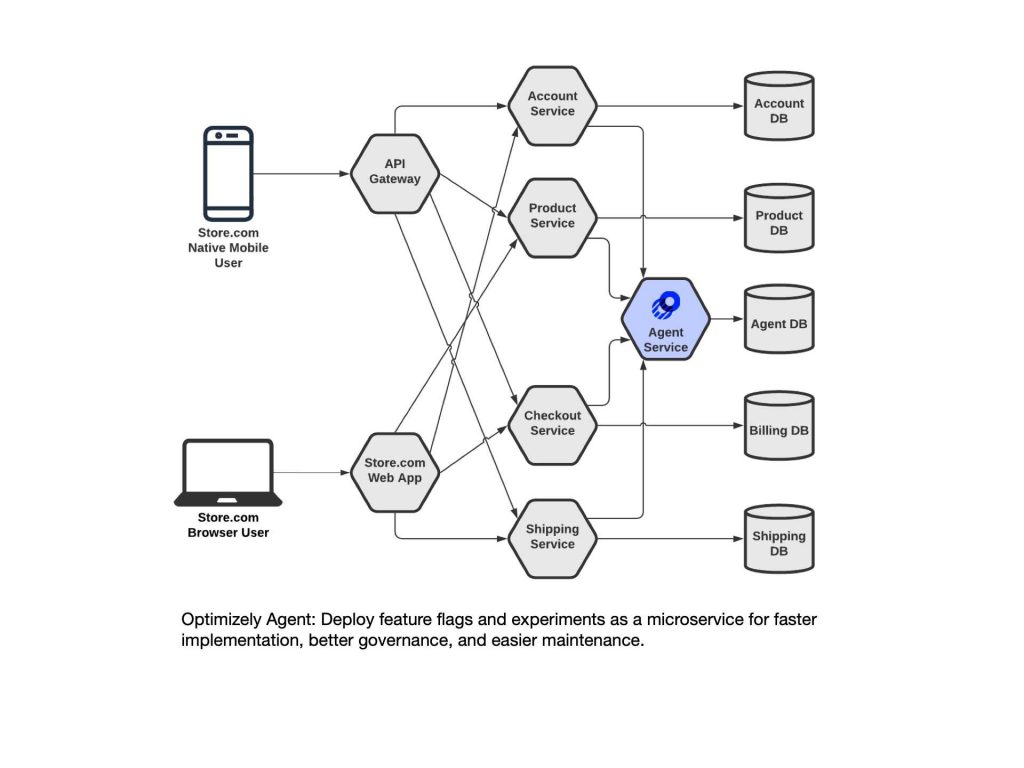Optimizely Embraces Docker Containers to Advance Feature Flagging
Optimizely, a provider of a platform for managing feature flagging within a DevOps process, announced today it is making the agent software for its platform available as a Docker container via an early access program.
Feature flagging makes it easier for DevOps teams to experiment with new capabilities by limiting access to some features to a limited number of users during the testing process. Previously, the only way to incorporate Optimizely within an application development project was to build a wrapper around a software development kit (SDK) provided by Optimizely. Now DevOps teams can now invoke Optimizely more easily via a lighter-weight Docker container option, dubbed Optimizely Agent, that is faster to implement and available as open source code on GitHub.
Alternatively, Optimizely is making available a binary that developers can compile and deploy however they prefer.
Asa Schachar, lead developer advocate for Optimizely, says that approach should make it a lot easier for DevOps teams to incorporate feature flagging within either a microservices-based or monolithic application using a standard REST application programming interface (API) to invoke a Docker container in which the agent software resides. In addition, a container-based approach compared to SDKs written in various programming languages will be easier to monitor and update over time, he notes. Optimizely Agent also provides access to an Admin API though which health checks on the Docker container can be run.
Finally, Schachar notes it is easier to maintain compliance with various mandates when there is one set of Docker containers applied consistently.
 In general, feature flagging lends itself well to microservices-based applications built using containers. DevOps teams can employ feature flagging across a set of microservices that make up a specific set of features or capabilities. That approach reduces risks by providing an on/off or “kill” switch while at the same time increasing speed of development and deployment of new features.
In general, feature flagging lends itself well to microservices-based applications built using containers. DevOps teams can employ feature flagging across a set of microservices that make up a specific set of features or capabilities. That approach reduces risks by providing an on/off or “kill” switch while at the same time increasing speed of development and deployment of new features.
Schachar says it is still early days in terms of adoption of feature flagging. However, Optimizely has raised more than $100 million in financing and counts Visa, BBC, IBM, The Wall Street Journal, Gap, StubHub, Metromile, Lending Club and Sonos among its customers.
A recent survey published by the company suggests the financial services sector is at the forefront of feature flag adoption. Half (51%) of financial services organizations using feature flagging saw a 10% increase in revenue thanks to being able to experiment. A total of 79% reported revenue increases of 5% or more. Most interesting from a DevOps perspective, the report finds 92% of respondents said they had appointed a digital champion for experimentation.
These days every development team is under pressure to roll out new capabilities faster but not all them have mastered the nuances of sophisticated DevOps practices that incorporate feature flagging. Nevertheless, every IT organization needs to find a way to thoroughly test those new features without unnecessarily exposing them to the entire base of end users. After all, not every new idea for a feature is a good one.




